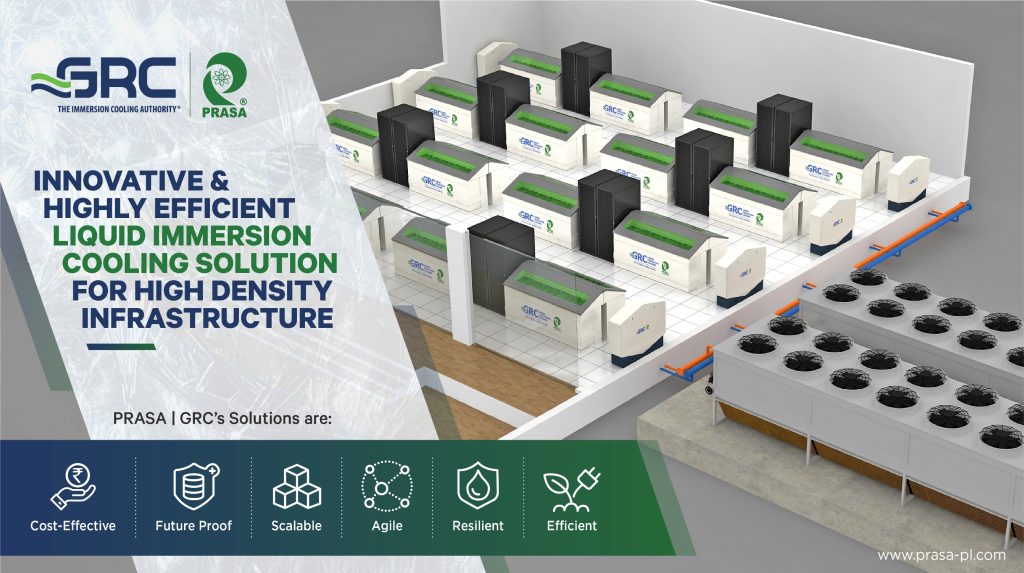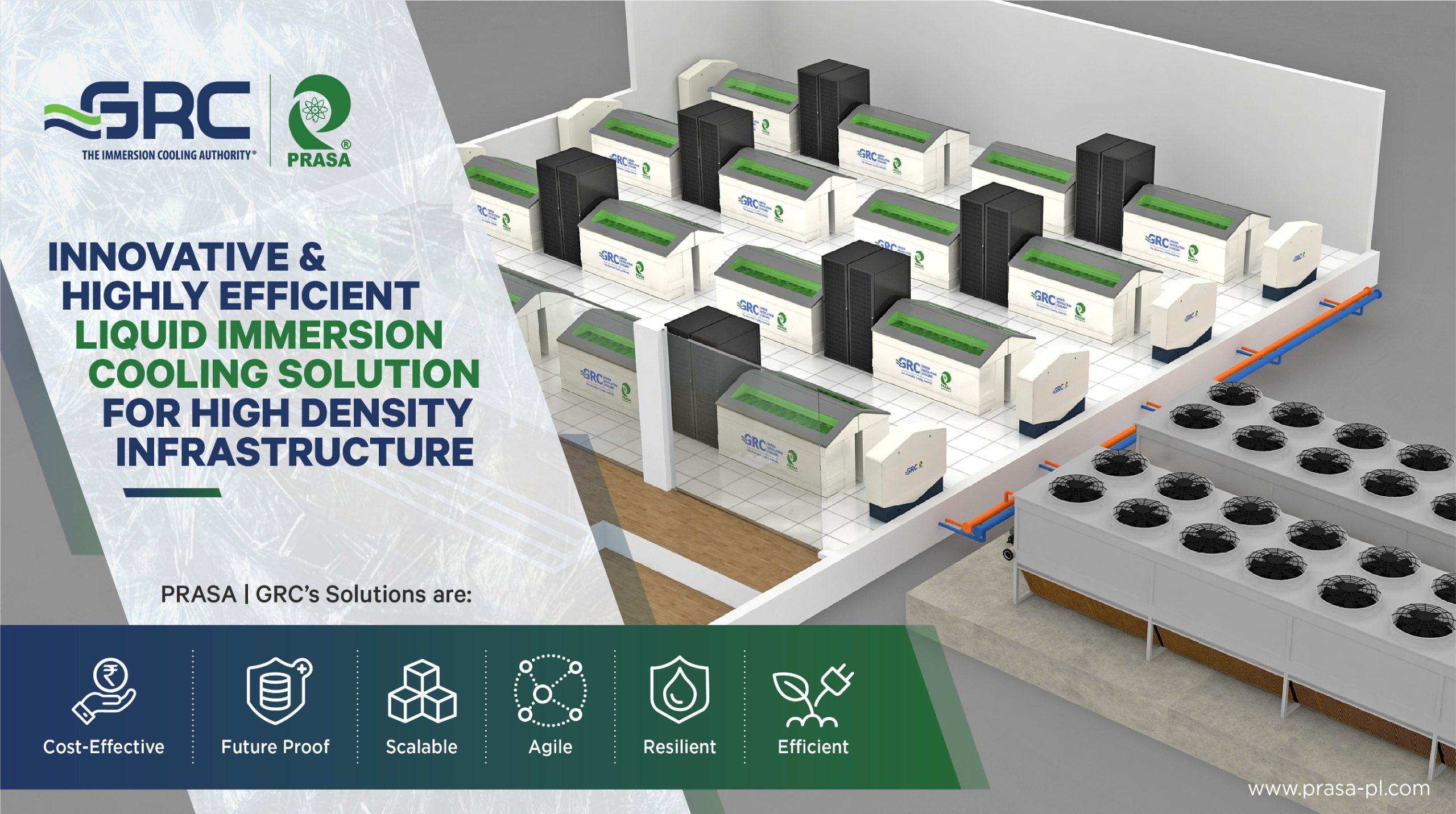
Immersion cooling allows for a much greater density of processing capabilities by removing active cooling components such as fans and heat sinks. The smaller “data center” can provide the same performance as the data center of a bigger scale, which can be easily flexed into urban areas with a restricted amount of space.
Increasing IT chip densities, and a prime focus on energy efficiency, and sustainability are the key drivers to explore immersion cooling technology in high computing & high-density data center infrastructure. Prasa and GRC together deliver an innovative liquid Immersion-cooling solution that can simplify the design, infrastructure, and operation of your high-density data center.
Cooling Requirements in Ultra High-Density Data Centers are Changing…
With the advancement of next-generation application architectures in AI, IoT, machine learning, virtual reality, and microservices, high-performance computing (HPC) equipment is already combining with co-processors in addition to existing servers to boost mission-critical workload sustainability. This results in drastic changes in data center load density.
Factors that make Liquid Immersion Cooling a viable option in high-density data centers
Increase in Rack Densities
Next-gen application architectures are consuming more power supply than ever, with rack densities reaching up to 100 kW/rack. Traditional cooling methods are not sufficient enough to cool these emerging systems.
To Reduce PUE
Existing cooling systems consume a large part of the power supply in data centers, thus data center operators are relentlessly motivated to reduce PUE near to 1, and Immersion systems can help achieve this goal
Space Constraints
Space management within a data center is one of the major challenges faced by an IT manager. Single-phase immersion-cooling systems allow a reduction in the overall data center footprint by IT equipment compaction.
Uncontrolled Environments for IT
With the rapid expansion of data centers, equipment is being placed in varying and harsh environments. In such cases, single-phase liquid immersion-cooling systems offer protection from airborne contamination.
Future-Proof Solutions For Your High-Density Data Center
“PRASA, with GRC offers the industry’s first innovative Liquid Immersion Cooling Solutions, single-phase immersion cooling solutions, the coolest answer to power-hungry data centers. PRASA| GRC Liquid Immersion Cooling Solutions breaks the heat barrier and takes your data center beyond limits. Compute Cooler, Run smarter without latency.”
Liquid Immersion Cooling solution is empowering the full computing potential with immersion cooling technology; where, servers are installed vertically in horizontal racks filled with a dielectric coolant, which is an excellent conductor of heat, but not of electricity. The coolant circulates between the racks and a coolant distribution unit (CDU) connected to a warm water loop, which may use a cooling tower or dry cooler, or a chiller return line, as the final form of heat removal.
PRASA | GRC’s Solutions Are —
- Cost Effective
- Future-Proof
- Modular & Scalable
- Fast & Flexible
- Energy Efficient
- Environmentally Resilient
Potential Applications for Immersion Cooling
- Artificial Intelligence
- Cloud / On-Premises Data Center
- High-Performance Computing
- High-Frequency Trading
- Edge Computing
Prasa brings together hardware, analytic, and ongoing services to ensure its customers’ vital applications run continuously, perform optimally, and grow with their business needs. Prasa solves the most important challenges facing today’s data centers, communication networks and commercial and industrial facilities with a portfolio of power, cooling, and infrastructure solutions and services
GRC (Green Revolution Cooling) was founded in 2009 with a vision to change the way data centers are designed, built and operated. GRC’s original Carnot Jet system demonstrated how the technology could help companies grow their computing power easily, cost-effectively, and limitlessly through a dramatic leap in data center cooling capabilities.

